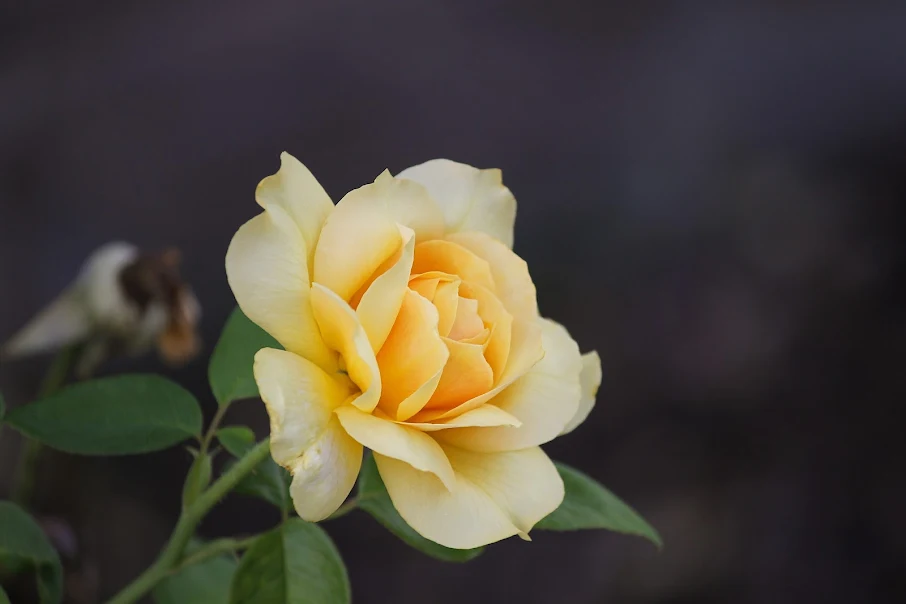Care Tips for Healthy Roses
- Soil and Sunlight: Roses thrive in well-draining soil enriched with organic matter. Ensure they get 6-8 hours of sunlight daily.
- Watering: Water deeply but infrequently to encourage deep root growth. Avoid overhead watering to minimize fungal issues.
- Fertilization: Apply a balanced fertilizer during the growing season. Begin with a high-nitrogen fertilizer in spring, switch to a balanced one during summer, and use a low-nitrogen, high-phosphorus formula in late summer to encourage blooms and root strength.
- Pruning: Prune in early spring to remove dead or weak canes and improve air circulation. Always sterilize tools between cuts to avoid spreading diseases.
- Mulching: Use mulch to retain soil moisture, regulate temperature, and suppress weeds.
Growth Formulas for Optimal Results
- DIY Fertilizer: Mix compost, aged manure, and bone meal. This provides essential nutrients like nitrogen for growth and phosphorus for blooms.
- Liquid Feeds: Diluted fish emulsion or compost tea can be applied every 2-3 weeks during active growth.
Common Rose Diseases and Identification
Roses, while beautiful, are susceptible to various diseases that can impact their health and appearance. Early detection and proper care can help prevent these diseases from spreading and affecting your roses. Below are some of the most common rose diseases and how to spot them:
1. Black Spot
- Symptoms: Black, round spots with fringed edges appear on the upper sides of leaves. As the disease advances, the affected leaves yellow and eventually fall off.
- Causes: Black spot is caused by a fungal infection that thrives in warm, humid conditions, particularly when roses are watered overhead.
- Prevention/Management: Ensure proper air circulation by pruning the plant and avoid overhead watering. Remove infected leaves and apply a fungicide to prevent further spread.
2. Powdery Mildew
- Symptoms: A white, powdery coating covers leaves, buds, and stems. The affected leaves may become twisted, deformed, and turn a reddish hue.
- Causes: This fungal disease thrives in warm, humid environments, especially when there is poor air circulation.
- Prevention/Management: Prune your roses regularly to allow for better airflow, and avoid overhead watering. Remove any infected plant material, and treat with a fungicide like sulfur.
3. Rust
- Symptoms: Yellow spots appear on the upper sides of the leaves, and orange or reddish pustules form on the underside. This can eventually lead to the leaves falling off.
- Causes: Rust flourishes in cool, damp weather, and it spreads quickly under these conditions.
- Prevention/Management: Clean up plant debris, water at the base of plants, and space roses apart to ensure good airflow. Applying fungicides can help manage the disease.
4. Rose Rosette Disease (RRD)
- Symptoms: A viral infection that causes roses to exhibit abnormal growth. You may notice distorted, spiky leaves, excessive thorniness, and deformed blooms.
- Causes: The disease is spread by tiny mites that feed on infected plants and transfer the virus to healthy ones.
- Prevention/Management: Remove and destroy infected plants immediately to prevent the spread of the disease. Control mite populations to reduce the risk of transmission.
5. Cercospora Leaf Spot (CLS)
- Symptoms: Round, brown spots with smooth edges appear on the leaves. As the disease progresses, the leaves may yellow and fall prematurely.
- Causes: This fungal infection typically affects roses during hot summer months with prolonged rainy weather.
- Prevention/Management: Improve air circulation by pruning, and avoid overhead watering. Fungicides that work against black spot can also help manage CLS.
6. Anthracnose
- Symptoms: Black spots with red or purple borders form on the leaves, followed by rapid leaf drop. Infected canes may develop sunken, yellowish cankers.
- Causes: A fungal infection common in regions with cool, damp spring weather.
- Prevention/Management: Remove fallen leaves and prune any infected canes. Fungicides can help control anthracnose, and using drip irrigation can help keep the foliage dry.
7. Downy Mildew
- Symptoms: Purple or brown spots appear on the leaves, which often have a fuzzy or powdery texture.
- Causes: Unlike other fungal diseases, downy mildew is caused by a type of algae that thrives in cool, high-humidity environments.
- Prevention/Management: Ensure proper spacing between plants to improve air circulation and avoid conditions that favor high humidity. Use specific treatments designed for downy mildew.
By regularly monitoring your roses for signs of these diseases and taking proactive steps to maintain a healthy garden, you can help prevent significant damage and keep your roses blooming beautifully throughout the season.
How to Spot and Manage Pests
- Aphids: Small green or black insects clustering on new growth. Treat with insecticidal soap or neem oil.
- Spider Mites: Stippled leaves with webbing. Spray water forcefully to dislodge them or use miticides.
- Japanese Beetles: Metallic green beetles feeding on flowers and foliage. Handpick or use traps


.png)










0 Comments